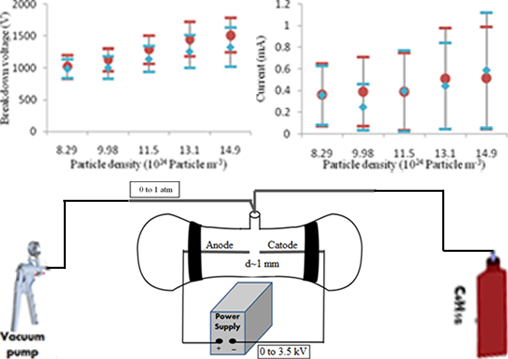Electrical discharge of butane and propane for carbon plasma with air impurities, slightly ionized at high pressure
DOI:
https://doi.org/10.59190/stc.v1i3.201Keywords:
Alkanes, Carbon Plasma, Direct Voltage, Electrical Discharge, IonizationAbstract
This paper investigates the ionization of butane and propane gas in the formation of carbon plasma with air impurities. The formation of carbon plasma is designed and operated by using a commercial pencil graphite electrode with a directionally electrical discharge method of less than 3.5 kV, injecting butane and propane gas with a mixture of air, pressure variations into the tube. Experimental results show the voltage and current before and after the breakdown voltage. The density and temperature of the plasma carbon are calculated from the current and the breakdown voltage. These results depicts that the ionization of air at a pressure of 12 cmHg (570 V) produces a breakdown voltage of 530 – 570 V and current of 0.27 – 0.45 mA, whereas at pressure of 37 cmHg (1160 V) produces breakdown voltage of 900 – 1100 V and current of 0.46 – 0.6 mA. The ionization of the butane and propane (with impurities of air) at pressure of 26 cmHg (1199 V and 1137 V) produces breakdown voltage of 831 – 1202 V, 839 – 1138 V and current of 0.07 – 0.65 mA, 0.08 – 0.63 mA. At the pressure of 46 cmHg (1828 V and 1590 V) produces breakdown voltage of 1246 – 1781 V, 1021 – 1627 V and current of 0.04 – 0.99 mA, 0.05 – 1.12 mA. These results indicate that the carbon plasma density increases with the increase of electrical voltage. This report shows good agreements for developing the growth of carbon nano tube on the surface of cathode which is generally always followed by air impurities at high pressure.

Downloads
Published
How to Cite
Issue
Section
License
Copyright (c) 2021 Ikhsan Rahman Husein, Nina Diana Nawi, Haryana Mohd Hairi

This work is licensed under a Creative Commons Attribution 4.0 International License.










